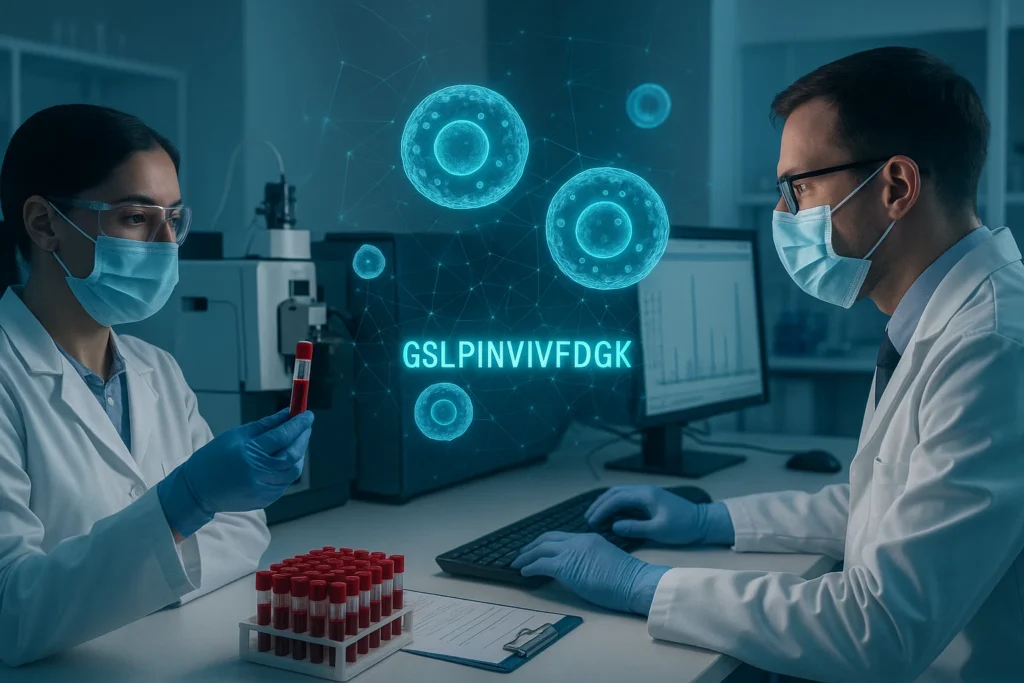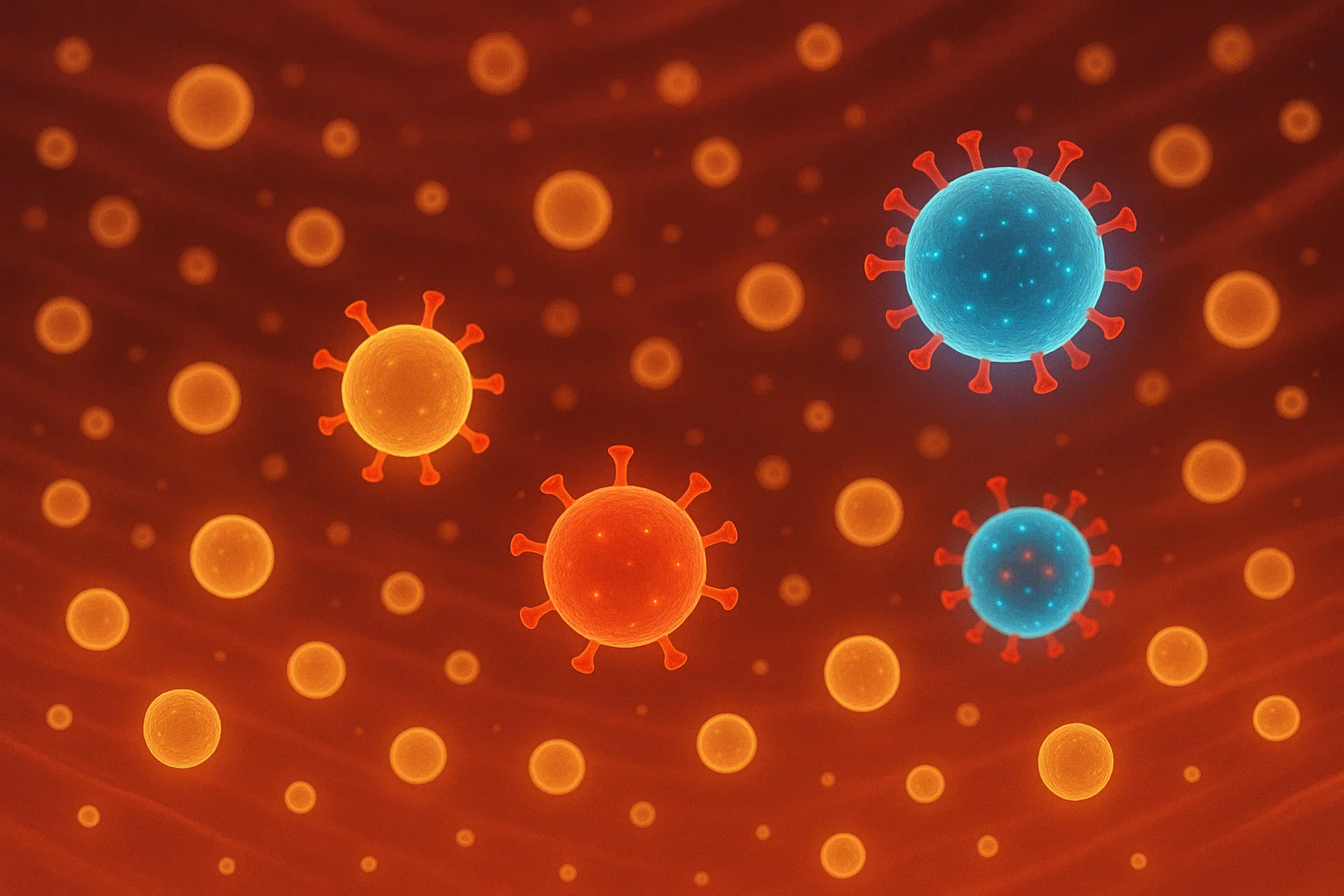Long COVID, or post-acute sequelae of SARS-CoV-2 infection (PASC) is a problem that concerns millions of people worldwide because the symptoms such as fatigue, brain fog, and shortness of breath remain in a half a year or even years after the first infection. Although it is a frequent occurrence in up to 30 percent of COVID recoverees, it lacks defining biomarkers that make diagnosis and treatment of it difficult. A 2025 report to Infection journal points toward a breakthrough: The finding of tells the SARS-CoV-2 based proteins in serum extracellular vesicles (EVs) which are tiny bubbles in blood that transport cellular messages.
EVs are nanosized (30-1000 nm) packets that are used to transfer proteins, lipids, RNA and shuttle between cells. They have been suggested as playing a role in viral transmission with regards to other pathogens, and this study represents one of the first to suggest they may play a role in long COVID. Labeling the viral debris in EVs, scientists suggest the possibility of a new diagnostic tool, giving light to the persistence of symptoms.

Study Design: Peering into Blood Samples
Investigators at Cedars-Sinai Medical Center and their colleagues compared the blood of 14 different adults (ages 18+, 43 percent women, 43 percent Hispanic/Latino) confirming long COVID. The effects were fatigue, dyspnea, and post-exertional malaise, which persisted more than 12 weeks past infection. The majority (79%) did not require hospitalization at first and only one was not vaccinated. Median post infection duration: 17 months.
Blood was sampled at rest and peak exercise, pre and post training program (description in earlier paper). Isolated EVs by precipitation and followed by mass spectrometry, leading to proteomics. They were interrogated against SARS-CoV-2 proteome of UniProt.
Key Findings: Viral Peptides Persist in EVs
Irrespective of the variability, 65 distinct SARS-CoV-2 peptides were detected in 22 of 56 EV samples. These corresponded to replicase polyprotein 1ab (Pp1ab) and R1AB_SARS2- essential to replicate viral RNA. Specificity to SARS-CoV-2, not human proteins was noted by sequence checks.
All the participants presented at least one viral peptide, suggesting a high persistence. Stable isotope-labeled peptides and high resolution monitoring were used to validate three of the peptides in several samples.
Interestingly, the exercise had a detectable effect: After the exercise, more peptides constituted EVs, indicating that physical stress releases EVs. This is in accordance with the exercise intolerance in long COVID.
Implications: Diagnostic and beyond a Biomarker
Why EVs? They also can contain fragments of zombie viruses that sustain chronic inflammation or autoimmunity. Pp1ab-replication signifies that vestiges may be responsible in perpetuating continuous immune reactions which cause symptoms.
The EV viral proteins could be used as a biomarker to objectively diagnose long COVID; beyond an objective symptom checklist. It could subtype or monitor treatment response e.g. antivirals such as Paxlovid against persistent virus.
The diversity of the participants (obese, sedentary) reflects real-life long COVID, but it is small, so the level of generality is not high. Future needs: Bigger cohorts, long COVID free controls, longitudinal follow up.

Wider (Bio)Globalization: Viral Persistence in Long COVID
The evidence is accumulating: SARS-CoV-2 persists in tissues (lungs, brain, muscles) months after the infection. Systemic spread could be due to EVs that deliver viral cargo to remote places, rending symptoms such as neuroinflammation (brain fog) or muscle weakness possible.
This is in addition to previous contributions: EVs carrying viral RNA have been detected in other infections; SARS-CoV-2 in plasma EVs in acute disease. Currently, its spread to chronic phase.
Therapeutic angles? To cure, symptoms could be alleviated by targeting EVs e.g. by drugs that prevent its release or inhibit its content. PEM risks and possible solutions underscore the point of personalization, but exercise, done carefully, may flush viral traces.
Future of Long Haulers: What Will Happen Next?
This is encouraging to the 65 million+ who have long COVID. Therapies can be accelerated via biomarkers that provide specific trial options. Provided that it is approved, EV testing may become the norm, like PCR with acute COVID.
Lifestyle advises: Coping with a paced lifestyle, eating, and simple exercise. Exertion of exercise: See physicians.
Reference
Abbasi A, Sharma R, Hansen N, Pirrotte P, Stringer W. Possible long COVID biomarker: identification of SARS-CoV-2 related protein(s) in serum extracellular vesicles. Infection. 2025. DOI: 10.1007/s15010-025-02612-x

